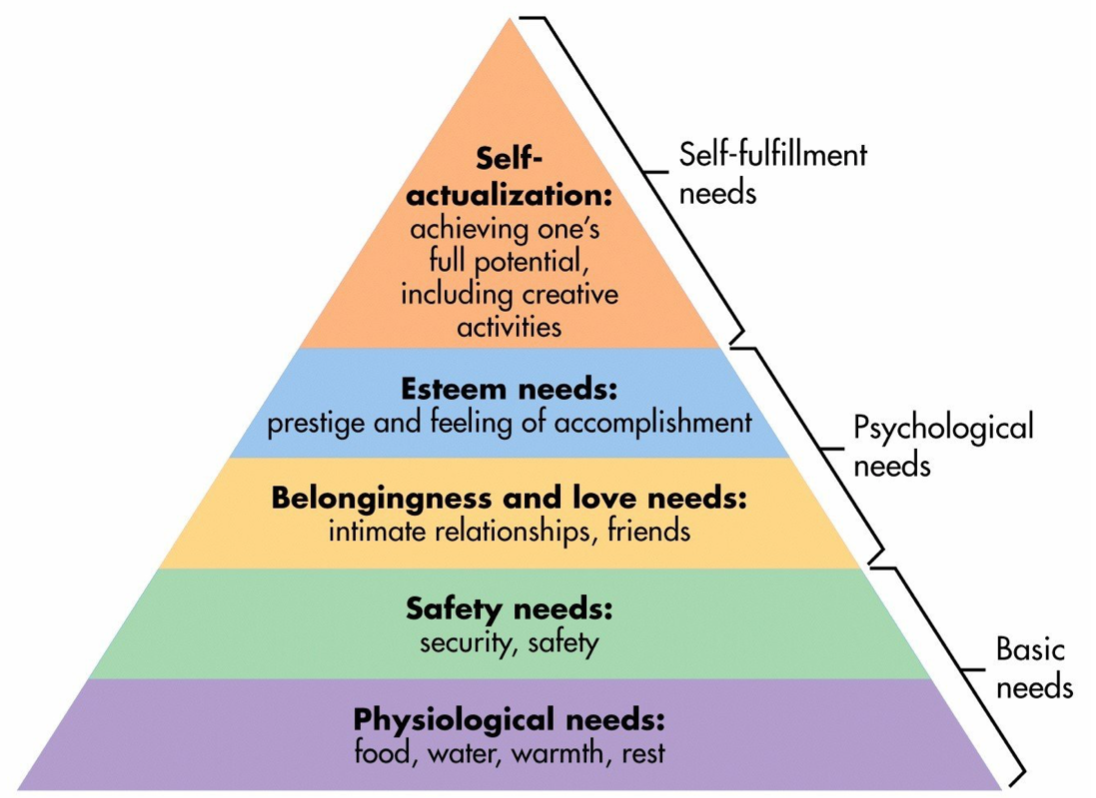|
I have a grandson who rocks!
‘Why?’ is his most frequently asked question. “Let’s put your boots on - Why? - Because it is raining outside - Why? - Because clouds turn into rain when they cool off - Why? - We need rain so the plants grow.” You know the rest of this story! He asks his next most frequent question when in his car seat. “Where are we? - We’re on Limeport Pike.” We drive for a few minutes. “Passing aunt Jan’s house? - Yep.” A few miles later. “Where are we? - Crossing Rt. 309 - Going to your house? - Yep”. “Where are we? - Turning onto Butternut Road where my house is - OK.” He is so smart. I turned onto a road I seldom ever go on. From the back seat I hear, “I have never been on this road before”. Why is this important? I started to think how his questions relate t0 Maslow’s Hierarchy of Need. The basics begin with physiological needs. When my grandson was born, his physical needs came first and still do. Everyone needs to eat, sleep and have a dry diaper on. Once those needs are met, the next layer includes security and safety. Am I safe? Does this make sense? Is everything OK? Why? and Where are we? are quests for safety and security. Every human being, especially those who work for you, need to know why they are doing what they are doing and where they are on the journey! We all have the basic need to know what the vision or mission is, what my part is and how I am doing. What to do. A leader must have willing followers. A clearly articulated and shared vision plus regular updates on progress pave the way. Knowing ‘Why’ provides their need for safety and security. Answering, ‘Where are we?’ through regular feedback provides their need for relationships and feelings of accomplishment. Thanks to my grandson, as a performance coach I have begun asking these questions of frontline employees before meeting with their leaders. They tell me about what they are trying to accomplish. I ask, ‘Why?’ and follow-up with ‘So, how is it going’. If everyone I talk to is on the same page their leader is meeting the basic needs that are the foundation for achieving one’s full potential.
0 Comments
Define teamwork. What I get in response when I ask clients to do this varies so widely that I believe it is the root cause of poor teamwork. Even when I ask this question of leaders in the same organization, the answers can be in direct opposition to each other. It only gets worse the deeper I go into the organization.
Why is it important? Stronger teamwork is a common long term goal of many of my clients. Leaders and managers everywhere are frustrated with their efforts to build a stronger team. They certainly spend a great deal of time and money trying to improve it. Employee retreats, trust falls, ropes courses, motivational posters and speakers, teamwork videos and football analogies are common. Actual strong teamwork isn’t. Teamwork has a direct correlation to another common initiative and catchphrase, “Employee Engagement”. I define engagement as willingly involved and working. If people are working on a common goal it is the basis of teamwork. There are so many videos online that illustrate teamwork. There is a great one showing a town in India where a fallen tree has blocked traffic and everyone is frustrated. A little boy tries to push the tree to no avail. Then one-by-one others get involved until enough people working together push the tree out of the way. There are many that show soldiers working with each other to overcome an obstacle that requires everyone to ensure that no one is left behind. So, what to do. Start by defining teamwork. I like this one, “Everyone engaged in a common activity”. Everyone doing something small will net more results than a few people doing something dramatic. How do you attain it? Start by determining something that everyone can do. Following is an example. I was working with an organization where there was rampant negativity and a sense of helplessness. My client was concerned and exploring what he could do to change it. Most teamwork initiatives seem overwhelming or risky leading to inactivity. Inactivity long enough leads to that sense of helplessness. I asked him to start with something simple everyone can do, ban sarcasm. It is easy to identify and something everyone has within their control. It might even be fun if administered as a challenge or game. Doing that one small and common activity would mobilize everyone in the organization to accomplish a task. The task would be relatively easy and the benefits obvious. |
Ed AlosiThoughtful observer of actions and results in the Retail environment. Archives
February 2022
Categories |

 RSS Feed
RSS Feed